
Update 57+ human cell drawing latest nhadathoangha.vn
As human skin needs water and food to keep the cells in shape, the plant cells need sunlight to make their energy and sugar. Human cells do not make energy, plant cells do. In fact, humans are animals that eat energy and plants are a good food because they have energy stored. Also, plants don't need more than the sun and water to get energy.
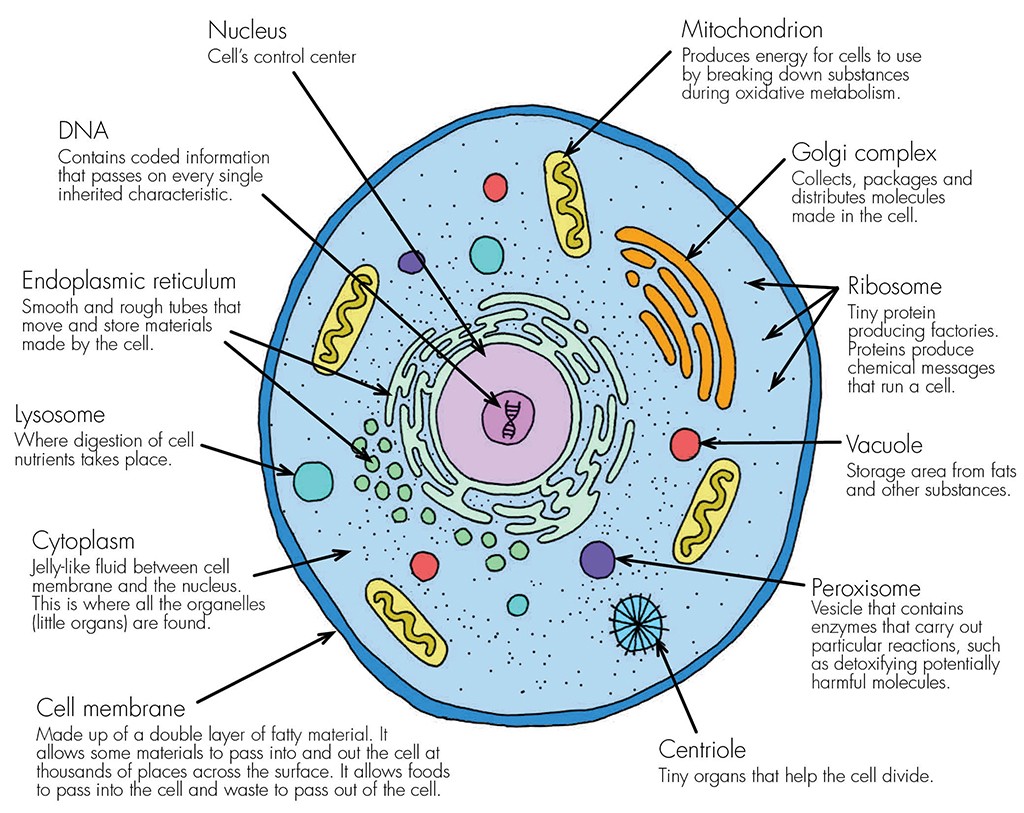
Cells Haleo
?µ 'šÔ "0nâc çûÏL? .§×Hg$Í \EQK‹)yI¢ ÛqmñÔOü] '°A€ Jb ûß›Zï†ÿ{Y[¹|$eÊÖRÎ$±óçÞûÞêu7Zj€d rJ w¶ŠàŸ ÇTqÖÜ÷Ú Ñ.

Education Chart of Biology for Human Cell Diagram Best Acupuncture llc
Cells. The most basic parts of the human machine are cells—an amazing 100 trillion of them by the time the average person reaches adulthood! Cells are the basic units of structure and function in the human body, as they are in all living things. Each cell carries out basic life processes that allow the body to survive.
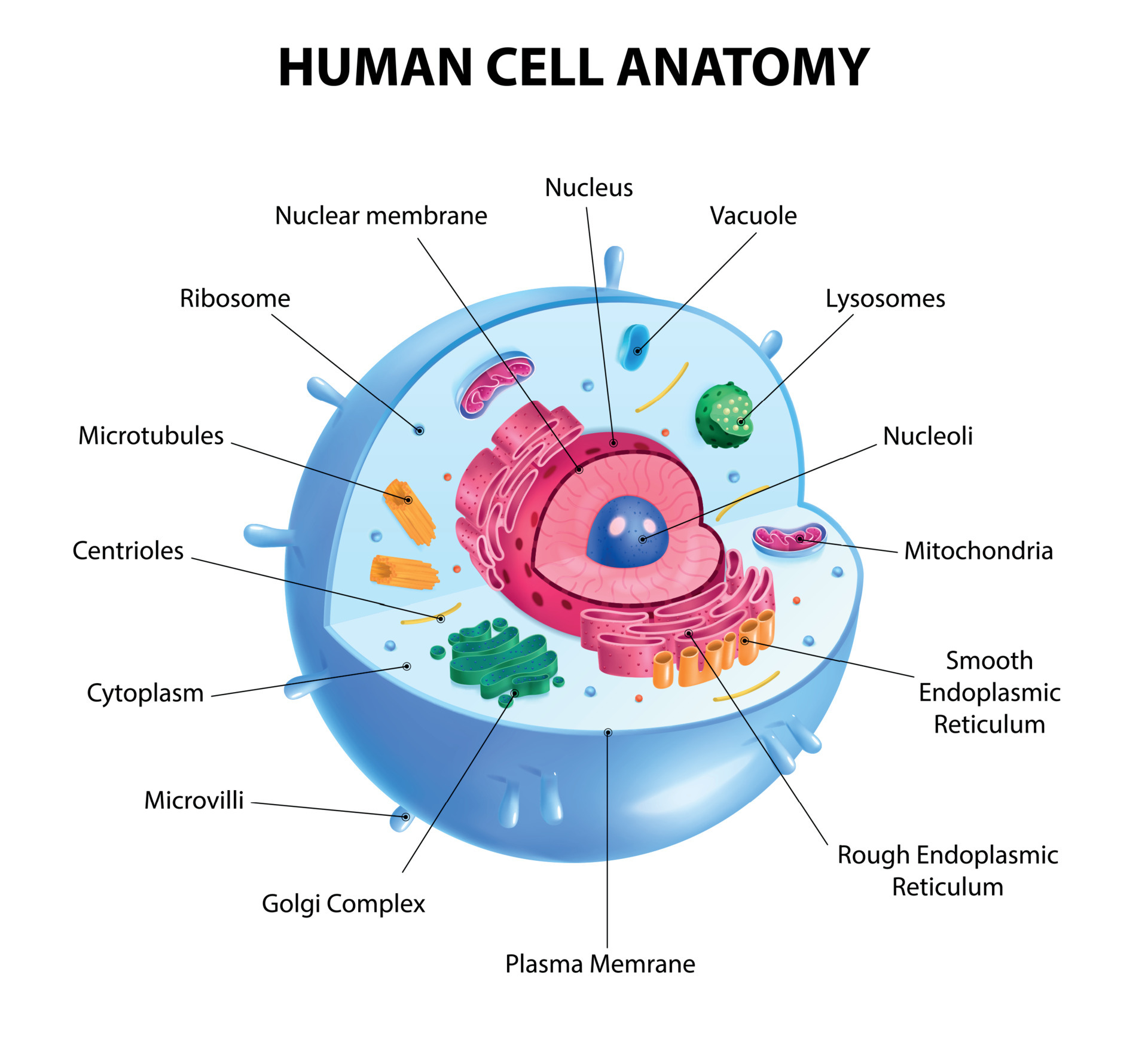
Human Cell Diagram 6406474 Vector Art at Vecteezy
An Introduction to the Human Body. 1.0 Introduction. 1.1 How Structure Determines Function. 1.2 Structural Organization of the Human Body. 1.3 Homeostasis. 1.4 Anatomical Terminology.. The cell membrane is an extremely pliable structure composed primarily of two layers of phospholipids (a "bilayer"). Cholesterol and various proteins are.

Cell Structure And Function Cells The Basic Units Of Life Siyavula
Detailed diagram of lipid bilayer of cell membrane. The cell membrane, or plasma membrane, is a selectively permeable biological membrane that surrounds the cytoplasm of a cell.. Human cancer cells, specifically HeLa cells, with DNA stained blue.

Human Cell Diagram, Parts, Pictures, Structure and Functions
Cell Structure. Ideas about cell structure have changed considerably over the years. Early biologists saw cells as simple membranous sacs containing fluid and a few floating particles. Today's biologists know that cells are infinitely more complex than this. There are many different types, sizes, and shapes of cells in the body.

human cell types Anatomy System Human Body Anatomy diagram and
Diagram 2: The human cell membrane. Image Source: www.curezone.org. Cytoplasm/Protoplasm. It is the fluid inside the cells, which allow a number of cell organs to float inside the cell. It contains a nucleus surrounded by a nuclear membrane. It consists of molecules, enzymes, fatty acids, sugar, and amino acids. (3)

Human Cell Diagram Cell diagram, Human cell diagram, Plant and animal
ADVERTISEMENTS: Let us make an in-depth study of the structure and functions of cell. After reading this article you will learn about: 1. Comparison of Prokaryotic Cells and Eukaryotic Cells and 2. Structure and Components of a Human Cell. Cell is a compartment where all the activities of life takes place. There are two basic […]
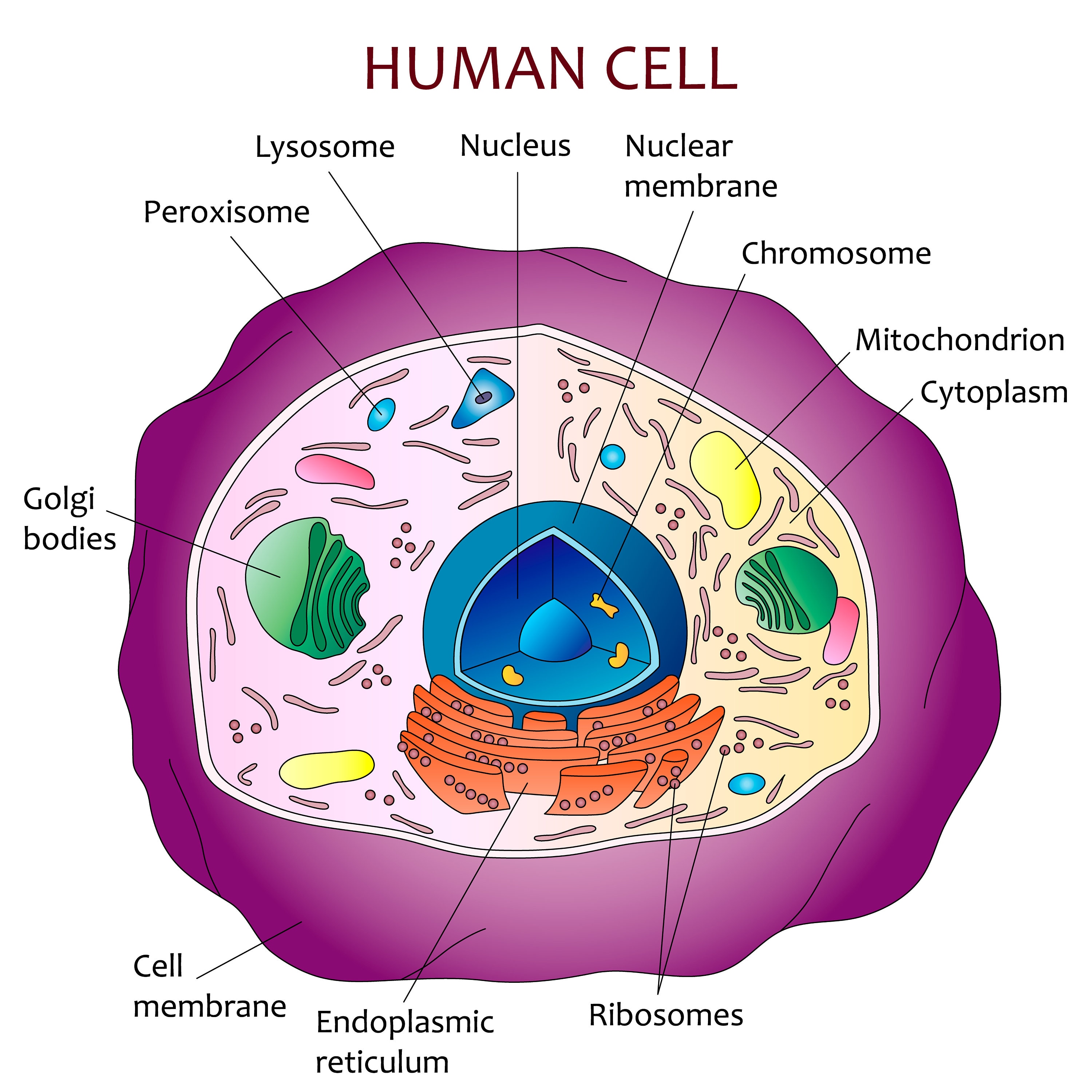
Human cell diagram Etsy
A diagram representing the cell as a factory. The cell membrane is represented as the "factory walls." The nucleus of a cell is represented as the "blueprint room.". Below is a table of the organelles found in the basic human cell, which we'll be using as our template for this discussion. Organelle Function Factory part; Nucleus: DNA Storage:

Education 645 High School Biology
A cell is the smallest living thing in the human organism, and all living structures in the human body are made of cells. There are hundreds of different types of cells in the human body, which vary in shape (e.g. round, flat, long and thin, short and thick) and size (e.g. small granule cells of the cerebellum in the brain (4 micrometers), up to the huge oocytes (eggs) produced in the female.
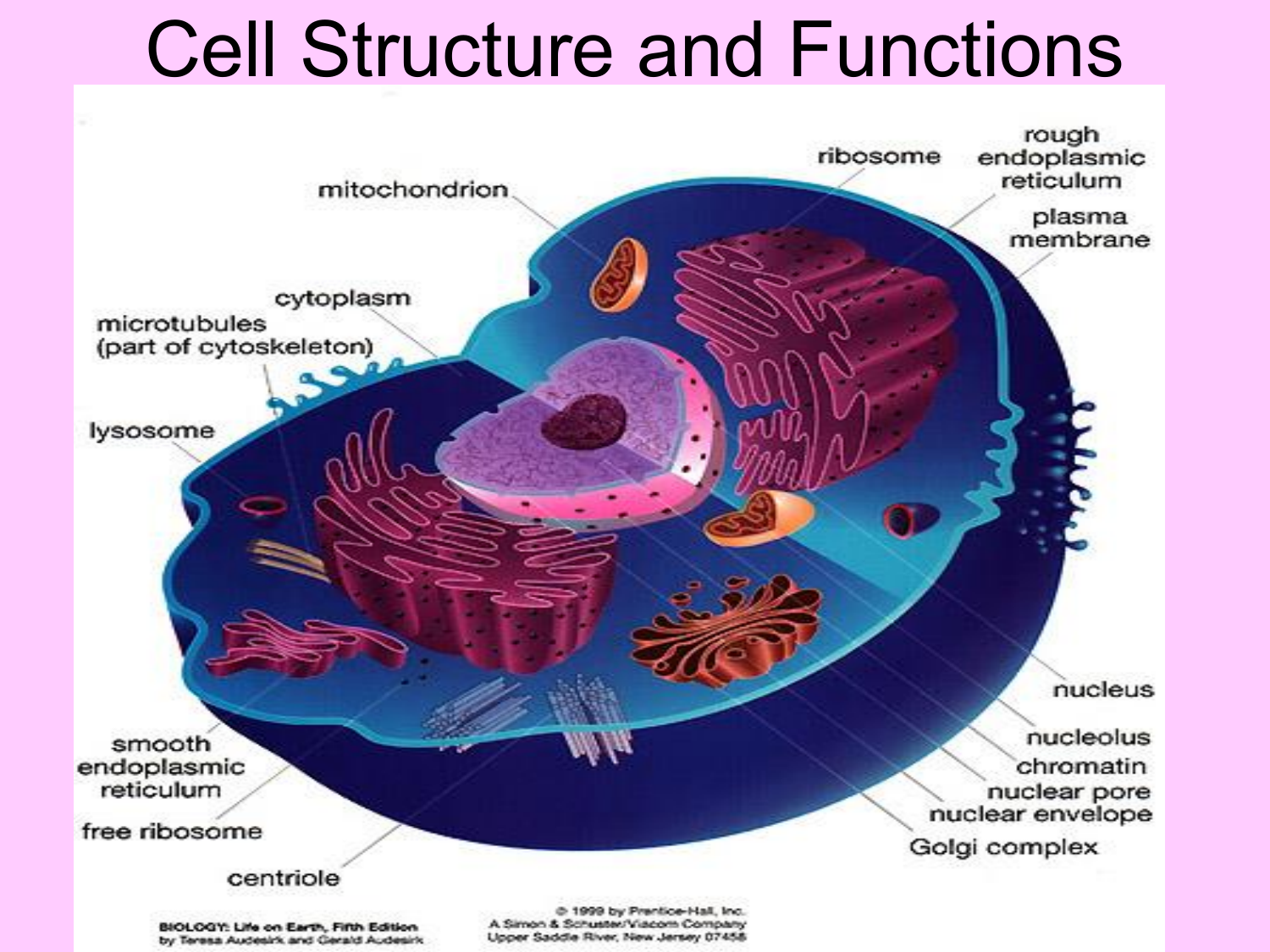
Cell Structure and Functions
Cells of humans typically have a mass 400,000 times larger than the mass of a single mycoplasma bacterium, but even human cells are only about 20 μm across. It would require a sheet of about 10,000 human cells to cover the head of a pin, and each human organism is composed of more than 30,000,000,000,000 cells.

Eukaryotic Plant Cell Organelles / Plant Cell Structures ( Read
The 46 chromosomes of a human cell are organized into 23 pairs, and the two members of each pair are said to be homologues of one another (with the slight exception of the X and Y chromosomes; see below). Human sperm and eggs, which have only one homologous chromosome from each pair, are said to be haploid (1n). When a sperm and egg fuse, their.
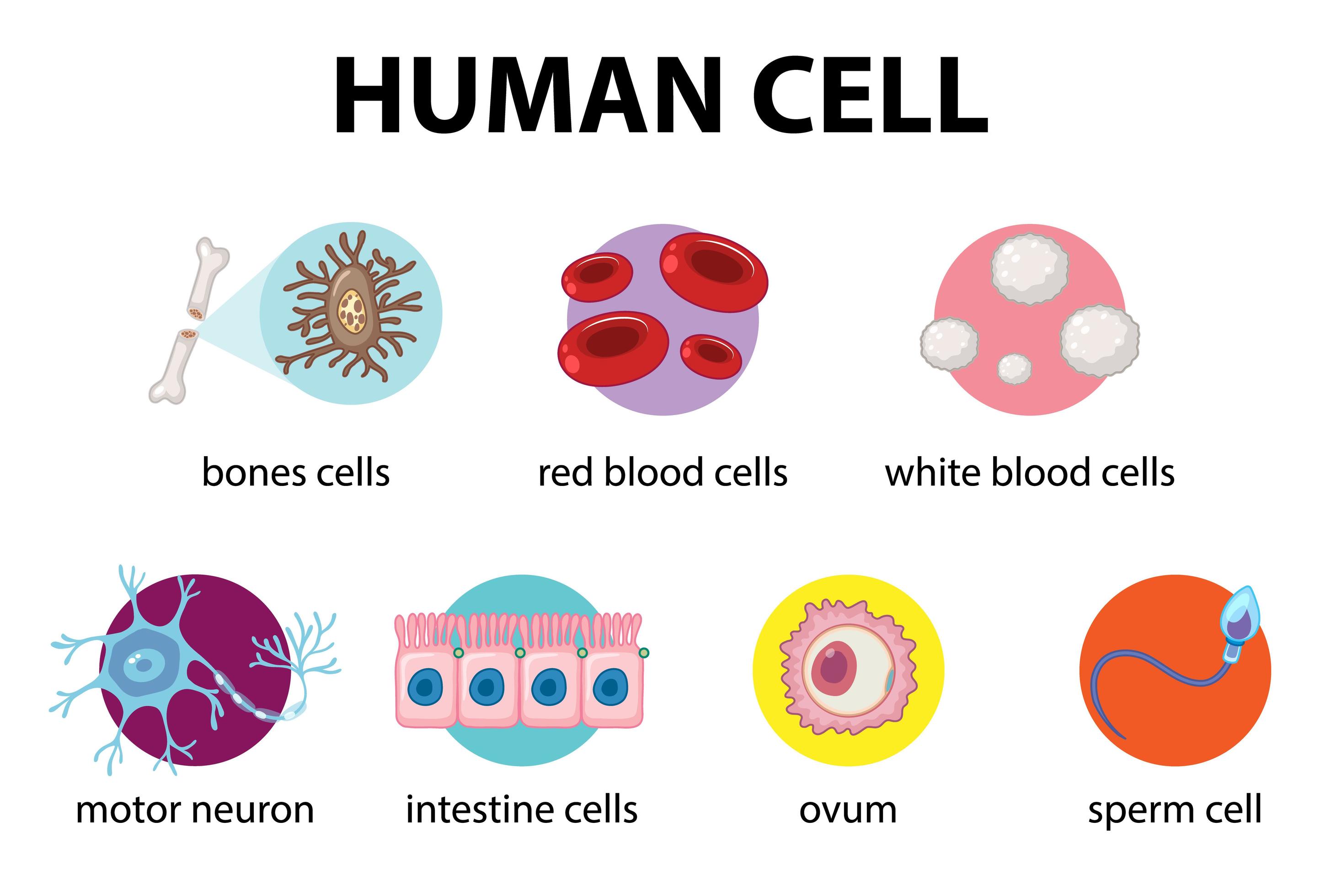
Diagram of human cell for education 1762228 Vector Art at Vecteezy
The human immune system is composed of a distributed network of cells circulating throughout the body, which must dynamically form physical associations and communicate using interactions between.

Human cell anatomy and organels diagram
The interior of human cells is divided into the nucleus and the cytoplasm.The nucleus is a spherical or oval-shaped structure at the center of the cell. The cytoplasm is the region outside the nucleus that contains cell organelles and cytosol, or cytoplasmic solution.Intracellular fluid is collectively the cytosol and the fluid inside the organelles and the cell nucleus.

The Human Cell Atlas An international effort
Interactive guide to stem cells and cell biology with 3D models and real microscopy data of GFP labeled hiPSCs.

Explain the nucleus of a cell with a neat labeled diagram Science
Human Cell - Properties, Diagram, Parts, Pictures, Structure. By Thulasi Ram. The cell is the basic unit of any living organ and it is the organ that replicate on its own determining growth. The cell does not need any other triggering element for its multiplication since it is self contained. Cell was first discovered by Robert Hooke in the.